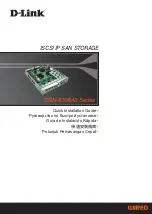
Page 20
LAARS Heating Systems
OFFSET (
OFS
)
Default: 0
°
F
• The Offset value moves the starting point of the Reset Ratio curves (see
charts on the right).
• Therefore, any change made to the Offset will immediately change the
value of the Calculated water temperature by the same amount.
• For example, if the Calculated water temperature were 150°F based on
the specifi c outdoor temperature and Reset Ratio, then increasing the
Offset from 0°F to 10°F would increase the Calculated water temperature
to 160°F.
• In a new installation, start with a Offset value of 0°.
• Adjust the Offset value in mild weather. If the ambient indoor
temperatures are warm in the warm weather, decrease the Offset. If the
ambient building temperatures are cold in the mild weather, increase the
Offset.
• The rule of thumb for baseboard radiation is to change the Offset by
4° for every degree you wish to change the building temperatures. For
radiant heat applications, change the Offset by 1° or 2° for every degree
you wish to change the building temperature.
• The Offset can be set from -40 to 40°F.
SETBACK/SHUTDOWN (
Stb
)
Default: 0
°
F
•
INPUT
terminals
INPUT
INPUT
7
and
77
8
can be programmed to provide either a lower
Calculated water temperature or Shutdown.
• The Setback feature is typically used to lower the temperature of
circulating hot water when a building is empty or when tenants are
sleeping.
• To program
INPUT
terminals
INPUT
INPUT
7
and
7
7
8
to Shutdown, set the Setback/
Shutdown value to 0. When the SC is Shutdown, this will be indicated
by the Calculated water temperature display showing
OFF
.
• The Setback/Shutdown value can also be set from 1 to 40°F.
• For a nonzero Setback value, the Calculated water temperature will
be reduced by the amount of the Setback. This will be indicated by
the System Temperature display fl ashing and the Calculated water
temperature display fl ashing the new value.
NORMAL SEQUENCING SETTINGS
REACTION TIME (
Rt
)
Default: 2 minutes
• The Reaction Time controls how Output Stages are Sequenced on and off based on PID type logic. Shorter Reaction Times allow
Output Stages to be Sequenced more quickly and are appropriate for systems with many small stages, where any single stage
does not signifi cantly change the total output. Longer Reaction Times are appropriate for systems with relatively few stages,
each of which signifi cantly changes the total output.
• When a Stage Output has been added, it can not be turned off, nor can another Stage Output be activated, until at least half the
Reaction Time has elapsed. The Purge Time
Pt
, Minimum Boiler Run Time
brt
and Last Stage Hold
LSH
also change the
amount of time any single Output Stage will run.
• The Reaction Time must be at least as long as the time it takes for a newly activated Stage Output to start affecting the system.
If the Reaction Time is shorter than this, the SC may activate additional Stage Outputs before it can see the impact of each Stage
Output. (Note that it is not necessary to include the purge cycle time for a new stage, as that is set on the Purge Time see pg. 21).
• If the system tends to fl uctuate rapidly above and below the Set Point, the Reaction Time may be set too short.
• If the system tends to remain always below the Set Point, the Reaction Time may be set too long.
• When making a change to the Reaction Time, wait at least 5 reaction times before making another change. The system will need
time to settle out.
• The Reaction Time can be set from half a minute (
0.5
) to eight minutes (
8.0
).
Outdoor Temperature
W
at
er
T
em
pe
ra
tu
re
70
40
50
60
130
120
110
100
1:3
4:1
1:1
Outdoor Temperature
W
at
er
T
em
pe
ra
tu
re
70
40
50
60
110
100
90
80
1:3
4:1
1:1
Outdoor Temperature
W
at
er
Te
m
pe
ra
tu
re
70
40
50
60
150
140
130
120
1:3
4:1
1:1
With a 0° Offset, the
ratio curves begin at
100° Water Temperature.
With a -20° Offset, the
ratio curves begin at
80° Water Temperature.
With a +20° Offset, the
ratio curves begin at
120° Water Temperature.









































